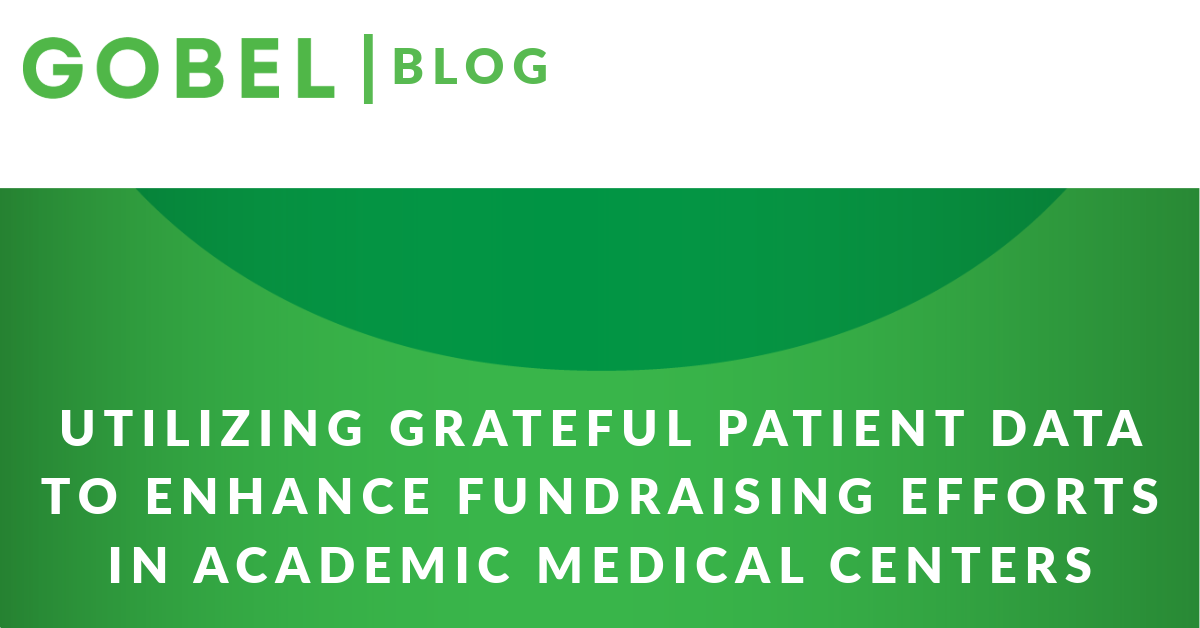
The abundance of data available in the healthcare philanthropy space presents both challenges and opportunities. One unique challenge nearly universally experienced by academic medical centers is the challenge of how to unite, yet partition, grateful patient data and university donor data. Despite the initial hurtles, through evaluating the data resources available to you and formulating a plan to implement resources to make that data actionable, an academic medical center can find success through gaining a full picture of their donor’s interactions with their institution. Exploring and establishing your organization’s data philosophy, or your organization’s strategy for utilizing data to support your organization’s strategic plan, will guide you and your organization to success.
Common Challenges
An academic medical center is defined by the Joint Commission International as “a tertiary care hospital that is organizationally and administratively integrated with a medical school. The hospital is the principal site for the education of both medical students and postgraduate medical trainees from the affiliated medical school.” Fundraising departments or foundations for academic medical centers also find themselves organizationally and administratively integrated with their universities and hospitals, often with varying levels of cohesion. The primary challenge for fundraisers is that they wish to understand the full relationship a potential donor has with your institution – are they graduates? Have they supported institutes and centers across the university? Have they seen physicians recently at your hospitals? – all in one database. For patient privacy protections, that complete view may be accessible to fundraisers supporting the academic medical center, but that data cannot be shared with fundraisers supporting various other departments of the university.
While the shared responsibility may present challenges at first, with the correct colleagues across the organization as your partners, it is possible to create a data sharing and unifying system which allows for a complete view of your donors. Once you identify those colleagues, the next step is reviewing the resources available to you – both the data resources and technological tools and how they can support your organization’s strategic goals.
Getting Started
The process of integrating your data begins with identifying which data can best support your most urgent strategic goals and assessing the opportunities available to you with the tools you already have and the colleagues you have assembled. The beginning of this process includes reviewing the capabilities of your current CRM, evaluating how you currently receive patient data and what other delivery options currently are, and discussing other known tools already acquired which can be used in this process. Once you assess what you can do with those resources, you’re likely to be left with more to do, including building a custom solution or adapting another available tool. GOBEL has developed a proprietary solution, G2G, which combines data management, analytics, and visualization to allow you to identify those most likely to become grateful patient donors to your organization.
Looking Ahead
Now that you have your data stored safely in your data solution, accessible to those who need the information to do their jobs well, guided by your data philosophy which matches your organization’s strategic goals, you may think your job is complete. Often, this is simply the first step, rather than the ending result. You now will want to establish ongoing data hygiene procedures to ensure that the data you’ve assembled stays up to date, accurate, and therefore, trustworthy for the users of that information. As your goals evolve as an organization, your data philosophy will also need to be adapted to best support your organization’s strategic vision. Consider ongoing training for your fundraising colleagues, to refresh their skills within the data solution, ensure updated data gets properly recorded, and answer questions that will arise once everyone has experience with the new data solution. You also want to ensure that your data is communicating the most important information as clearly as possible. Often, integration into a business information tool, such as Tableau or Power BI, will provide you the tools you need to communicate well with your fundraisers and volunteers.
Are you working with an academic medical center and need a technological solution to best manage your grateful patient population? Contact us at info@gobelgroup.com to connect with GOBEL today and see how we can guide and assist you through the process.
